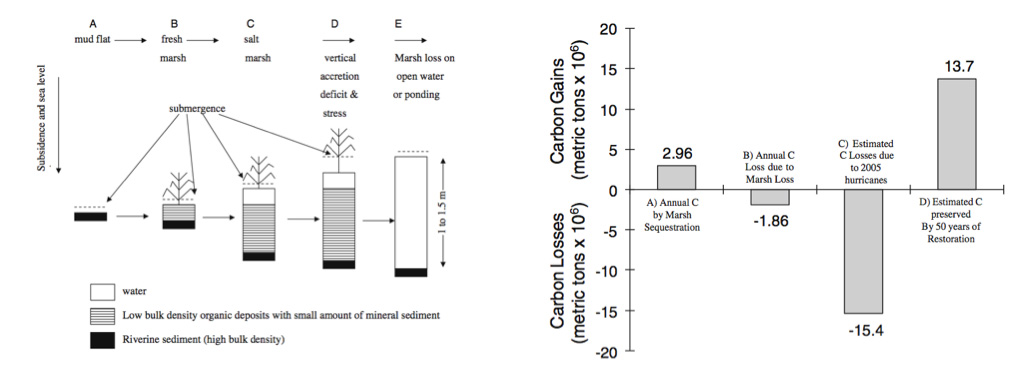ConocoPhillips and Tierra Resources worked together to investigate what happens to the carbon stored in wetland soil during wetland loss. Wetlands sequester, or store, carbon through photosynthesis. As healthy wetlands grow, they take carbon dioxide (CO2) out of the atmosphere and incorporate the carbon contained in the CO2 into the leaves, branches, roots and soil. However, as wetlands convert to open water, the previously stored carbon contained in the soil can be re-released back into the atmosphere. Meanwhile, Louisiana has some of the fastest rates of wetland loss in the world occurring at a rate of one football field of wetlands every hour.
It has been unknown whether the carbon contained in the soil is released as greenhouse gases (GHGs), or if this soil is transported and buried in adjacent water bodies. This question was researched by the Tierra Resources team including researchers from Louisiana State University. Study plots were established in freshwater, brackish, and saltwater wetlands where greenhouse gases were monitored as the sites began to degrade.
The research confirmed that as brackish and saltwater marshes convert to open water they release greenhouse gases into the atmosphere. The results were published in the peer-reviewed journal Wetlands in October 2016. These results give more value to restoring wetlands because preventing greenhouse gas emissions that occur during wetland loss is now eligible for carbon credits. We hope this leads to more funding for coastal restoration and will stimulate more research on this topic globally.
Read the Journal Article:






